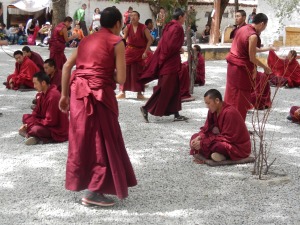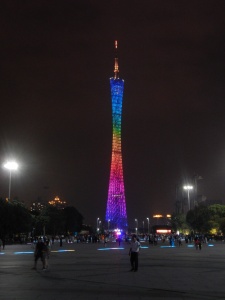This is my final instalment of blog posts on China. After leaving the sublime Tiger Leaping Gorge in Yunnan Province I had one more ‘side trip’ before getting to Guangzhou from where I continued my work. And what a side trip it was!
The name Tibet had always conjured up some sort of mystical unreachable land in my mind and getting there is not that straightforward. Although it is part of China you still need to apply well in advance to get a travel permit (on top of the Chinese visa) to visit Tibet. And even then there are many restrictions on travel. If you want to travel outside of the capital, Lhasa, to the more remote areas you need more permits on top. Even if you are staying only in Lhasa, as I did, you must be met at the airport by an official guide who is supposed to escort you throughout your stay in Tibet. Many of the sights in the city can only be visited by foreigners who are accompanied by a guide, but fortunately I was allowed time on my own to explore the city by myself too.
Tibet covers a vast area and is larger than both South Africa and Nigeria. Home to some of the most stunning mountain scenery in the world it skirts the Himalayas to the south. It has a population of just over three million (by contrast Nigeria has 180 million!) and a population density of only 2.5 people per square kilometre. Lhasa’s isolation from much of the world and from China has meant that it is quite a different place to the other cities I’d been to on the trip. Yes, it has a ‘new’ area with concrete and metal eyesores rising from the pavement but it also has a distinct culture and way of life which is truly fascinating. This is best experienced by walking the Barkhor pilgrim circuit around the Jokhang Temple – a real travellers experience and a must-do if you ever get the chance, or urge, to visit Tibet. Other highlights include the debating monks at the Sera Monastery, the gargantuan Potala Palace, spinning golden prayer wheels, the ever-present smell of yak butter and eating yak burgers! Yak is quite intrepid for my unadventurous palate but it was very tasty as are the momo dumplings and shablep pies. The only downside to my time in Lhasa was leaving. Oh, and waking in the night in a filthy dorm to find a huge spider sat on my face!
Next up was Guangzhou (formerly called Canton), one of China’s megacities. A megacity is a city with a population of over ten million and China has five of them; Beijing, Shanghai, Guangzhou, Shenzhen and Tianjin. I mentioned the sprawl of urbanisation in the Shanghai area in a previous post and Guangzhou is part of a similar sprawl of adjoined built-up areas which stretches all the way to Hong Kong, some 160 kilometres away. This conurbation is known as the Pearl River Delta Economic Zone and also includes the cities of Shenzhen, Dongguan and Foshan. This nifty population graphic from the BBC shows the area in relation to other Chinese urban centres. And with China abandoning its one child policy these population predictions may increase further. The article also contains the quite astonishing fact that China used more cement in the three years from 2011 to 2013 than the USA did in the whole of the twentieth century!
Guangzhou is one of China’s most cosmopolitan cities, owing in part to its proximity to Hong Kong and the international influence from there. Although the city stretches for miles most of my data collection took place in the Tianhe area, home to several impressive malls. Just south of here is the great setting of Zhujiang New Town with a wide pedestrianised plaza reaching all the way to the banks of the Pearl River from where the Canton Tower stands proudly. After the sun goes down the whole area becomes a mass of neon and the Canton Tower looks pretty impressive with its rainbow coloured illuminations overlooking the city.
Jumping on the train, in a little over half an hour after leaving Guangzhou I found myself 140 kilometres away in Shenzhen, another one of China’s megacities. Shenzhen, like Guangzhou, is also in the province of Guangdong which accounts for over 10% of China’s GDP. This, combined with Shenzhen bordering Hong Kong, has also given Shenzhen a very cosmopolitan air. In fact the Guangdong Province has more expatriates than any other in the country as illustrated in this overview of expatriate demographics in China. Nowhere was this more apparent than at McCawley’s Irish Pub in the Coco Park area where I spent a painful evening watching my beloved Crystal Palace FC lose on the big screen, surrounded by cheering Tottenham Hotspur fans from north London!
Shenzhen is the third largest container port in the world (behind Shanghai and Singapore) and was the first of China’s Special Economic Zones (SEZs) in 1980. The SEZs were introduced to encourage foreign investment in China and have more flexible economic policies. Special tax incentives and more lenient government approaches have helped Shenzhen become one of the country’s Tier 1 cities. It is also one of China’s high tech hubs and has been dubbed the Silicon Valley of China with many technology companies having their headquarters in the city. Unfortunately, I haven’t got any photos from my time in Shenzhen as my camera packed up but I hope you enjoy the pictures in the slideshow from Lhasa and Guangzhou!
Well, that’s the last of my China posts folks. Next up I’ll be reporting on my trip to Saudi Arabia and Bahrain.




